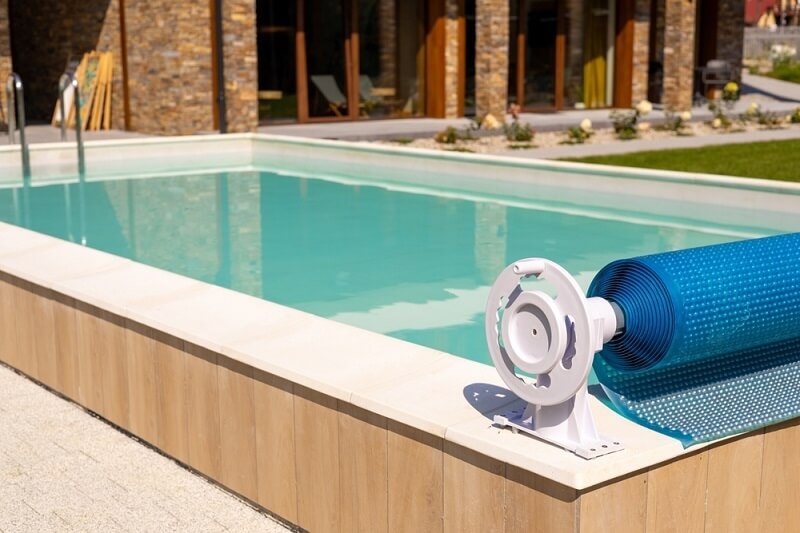Exploring Homeowners Insurance: A Guide to Policy Types
Exploring Homeowners Insurance: A Guide to Policy Types


Homeowners insurance is crucial to protecting your home and belongings from unforeseen events. Several types of homeowners insurance policies are available, each offering different levels of coverage. Understanding the differences between these policies can help you choose the right one for your needs. In this comprehensive guide, we will explore the various types of homeowners insurance policies, including HO-1, HO-2, HO-3, HO-4, HO-5, HO-6, HO-7, and HO-8 policies.
HO-1 Policy (Basic Form)
HO-1 policies are the most basic type of homeowners insurance and provide coverage for a limited set of perils, such as fire, theft, vandalism, and certain natural disasters. This policy is suitable for homeowners who are looking for a low-cost option but offers limited coverage compared to other policies.
HO-2 Policy (Broad Form)
HO-2 policies offer broader coverage than HO-1 policies and include protection against a wider range of perils, such as falling objects, weight of ice, snow, and sleet, and accidental discharge of water or steam. This policy is suitable for homeowners who want more comprehensive coverage than HO-1 policies but do not require the extensive coverage offered by HO-3 policies.
HO-3 Policy (Special Form)
HO-3 policies are the most common type of homeowners insurance and provide coverage for all perils except those specifically excluded in the policy. This policy offers comprehensive coverage for your home and personal belongings and is suitable for most homeowners.
HO-4 Policy (Renter's Insurance)
HO-4 policies, also known as renter's insurance, provide coverage for tenants renting a property. This policy covers the tenant's personal belongings and provides liability coverage but does not cover the structure of the building itself, as this is the landlord's responsibility.
HO-5 Policy (Comprehensive Form)
HO-5 policies offer the most comprehensive coverage of all homeowners insurance policies and provide coverage for all perils except those specifically excluded in the policy. This policy is suitable for homeowners who want the highest level of protection for their homes and personal belongings.
HO-6 Policy (Condo Insurance)
HO-6 policies provide coverage for condominium owners and cover the interior of the unit, personal belongings, and liability coverage. This policy does not cover the structure of the building itself, as this is typically covered by the condominium association's insurance.
HO-7 Policy (Mobile Home Insurance)
Homeowners who own prefabricated or mobile homes are covered under HO-7 insurance. Although it is particularly made for mobile homes and their particular dangers, this policy provides coverage akin to that of HO-3 plans.
HO-8 Policy (Older Home Insurance)
HO-8 policies are designed for older homes that may not meet the replacement cost requirements of other homeowners insurance policies. This policy provides coverage for the actual cash value of the home, taking into account depreciation, and is suitable for homeowners of historic or older homes.
Know the Difference Between an HO-3 and HO-5 Policy

Image Source: YouTube
The main difference between an HO-3 and an HO-5 homeowners insurance policy lies in the level of coverage they provide. An HO-3 policy is a named peril policy, meaning it only covers perils specifically listed in the policy. On the other hand, an HO-5 policy is an open peril policy, providing coverage for all perils except those specifically excluded in the policy.
An HO-3 policy typically covers the structure of your home and personal belongings against perils such as fire, theft, vandalism, and certain natural disasters. However, it will only pay out for damages caused by perils that are specifically named in the policy.
In contrast, an HO-5 policy offers broader coverage, protecting your home and personal belongings against all perils except those explicitly excluded in the policy. This means that an HO-5 policy provides more comprehensive coverage than an HO-3 policy and is often considered the most comprehensive type of homeowners insurance policy available.
While an HO-5 policy offers more extensive coverage, it may also come with a higher premium than an HO-3 policy. This is because the insurance company assumes more risk by offering open peril coverage, so they charge higher premiums to offset this risk.
The main difference between an HO-3 and an HO-5 policy is the level of coverage they provide. An HO-3 policy is a named peril policy, covering only perils specifically listed in the policy, while an HO-5 policy is an open peril policy, providing coverage for all perils except those specifically excluded.
Learn the Types of Home Insurance Coverage
Home insurance coverage types can vary based on the policy you choose. Here's an overview of the common coverage types:
Dwelling Coverage
This covers the structure of your home in case of damage from covered perils such as fire, wind, or vandalism. It typically includes attached structures like a garage or deck.
Other Structures Coverage
This covers structures on your property that are not attached to your home, such as a detached garage, shed, or fence.
Personal Property Coverage
This covers your belongings inside your home, such as furniture, clothing, and appliances, if they are damaged or stolen. Some policies may also cover belongings outside your home, like a laptop or bike.
Loss of Use Coverage
If your home becomes uninhabitable due to a covered peril, this coverage helps pay for additional living expenses, such as hotel stays or meals, while your home is being repaired.
Personal Liability Coverage
Personal liability coverage protects you if you are found legally responsible for injuries or property damage to others. It can help cover legal fees, medical bills, and damages.
Medical Payments Coverage
This covers medical expenses for guests who are injured on your property, regardless of fault. It can help cover ambulance fees, X-rays, or hospital stays.
Additional Endorsements
These are optional coverages that you can add to your policy for additional protection. Examples include coverage for high-value items like jewelry or art, identity theft, or water backup.
Important Tips for Buying Homeowners Insurance

Image Source: Times Property
Buying homeowners insurance is a crucial step in protecting your home and belongings from unforeseen events. Here are some tips to help you make an informed decision when purchasing homeowners insurance:
Assess Your Needs
Before buying homeowners insurance, assess your needs based on factors such as the value of your home, the cost of rebuilding it, and the value of your belongings. This will help you determine the level of coverage you need.
Understand Your Policy
Read your homeowner's insurance policy carefully to understand what is covered and what is not. Pay attention to coverage limits, deductibles, and exclusions to avoid any surprises when you need to file a claim.
Shop Around
Compare quotes from multiple insurance companies to find the best coverage at the most affordable price. Consider factors such as the company's reputation, customer service, and financial stability when making your decision.
Bundle Your Policies
Consider bundling your homeowner's insurance with other policies, such as auto insurance, to take advantage of discounts offered by insurance companies.
Consider Additional Coverage
Depending on your needs, you may want to consider additional coverage options, such as flood insurance or earthquake insurance, to protect your home from specific risks that are not covered by standard homeowners insurance policies.
Review Your Policy Annually
Review your homeowner's insurance policy annually to ensure that it still meets your needs. Update your coverage as necessary based on changes to your home, belongings, or lifestyle.
Work with an Independent Agent
Consider working with an independent insurance agent who can offer you a variety of options from different insurance companies. An independent agent can help you find the best coverage at the best price.
Conclusion
In conclusion, understanding the different types of homeowners insurance policies can help you choose the right coverage for your needs. Whether you are looking for basic protection or comprehensive coverage, there is a homeowners insurance policy that can meet your needs and provide you with peace of mind, knowing that your home and belongings are protected.
This content was created by AI



